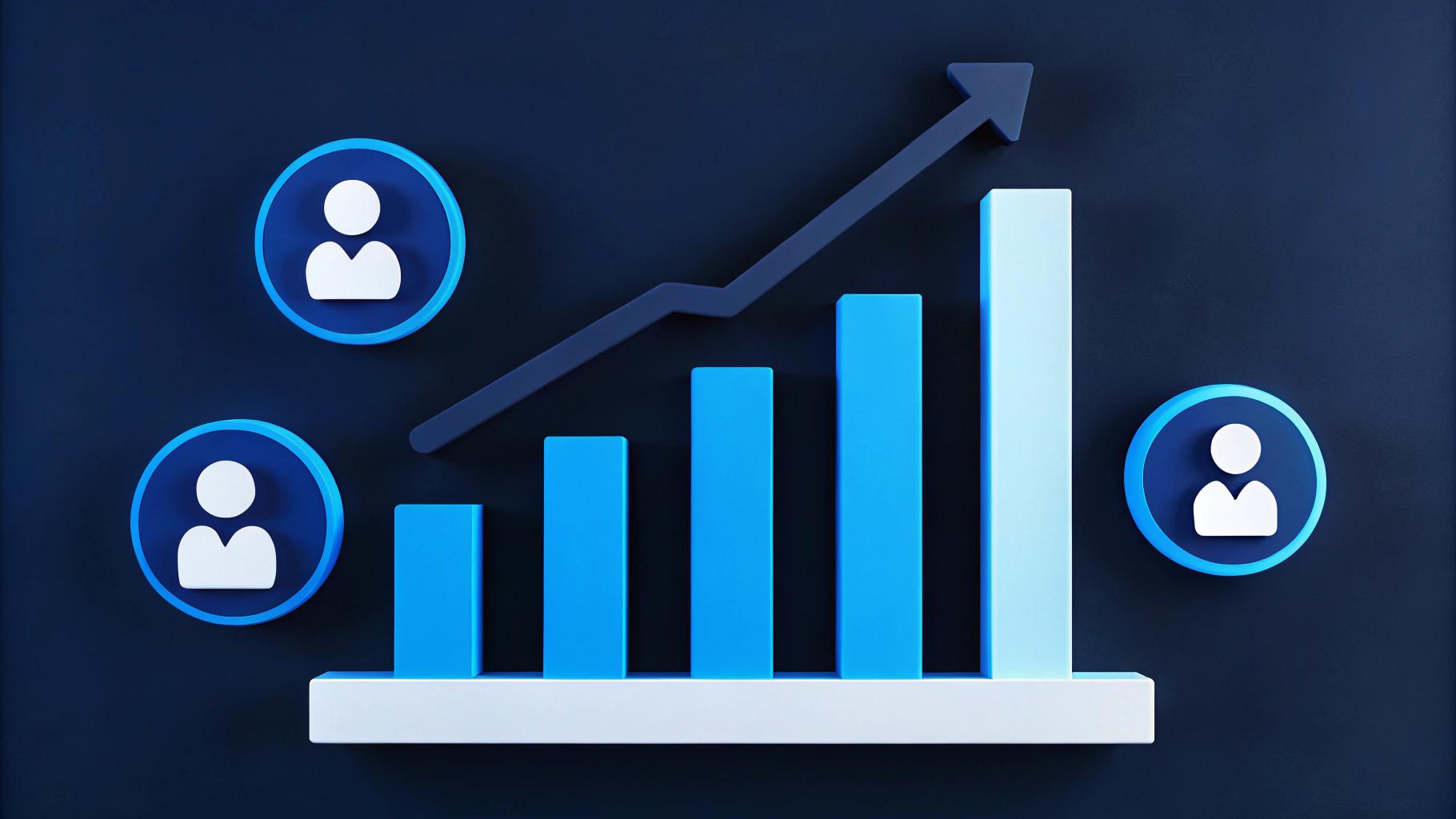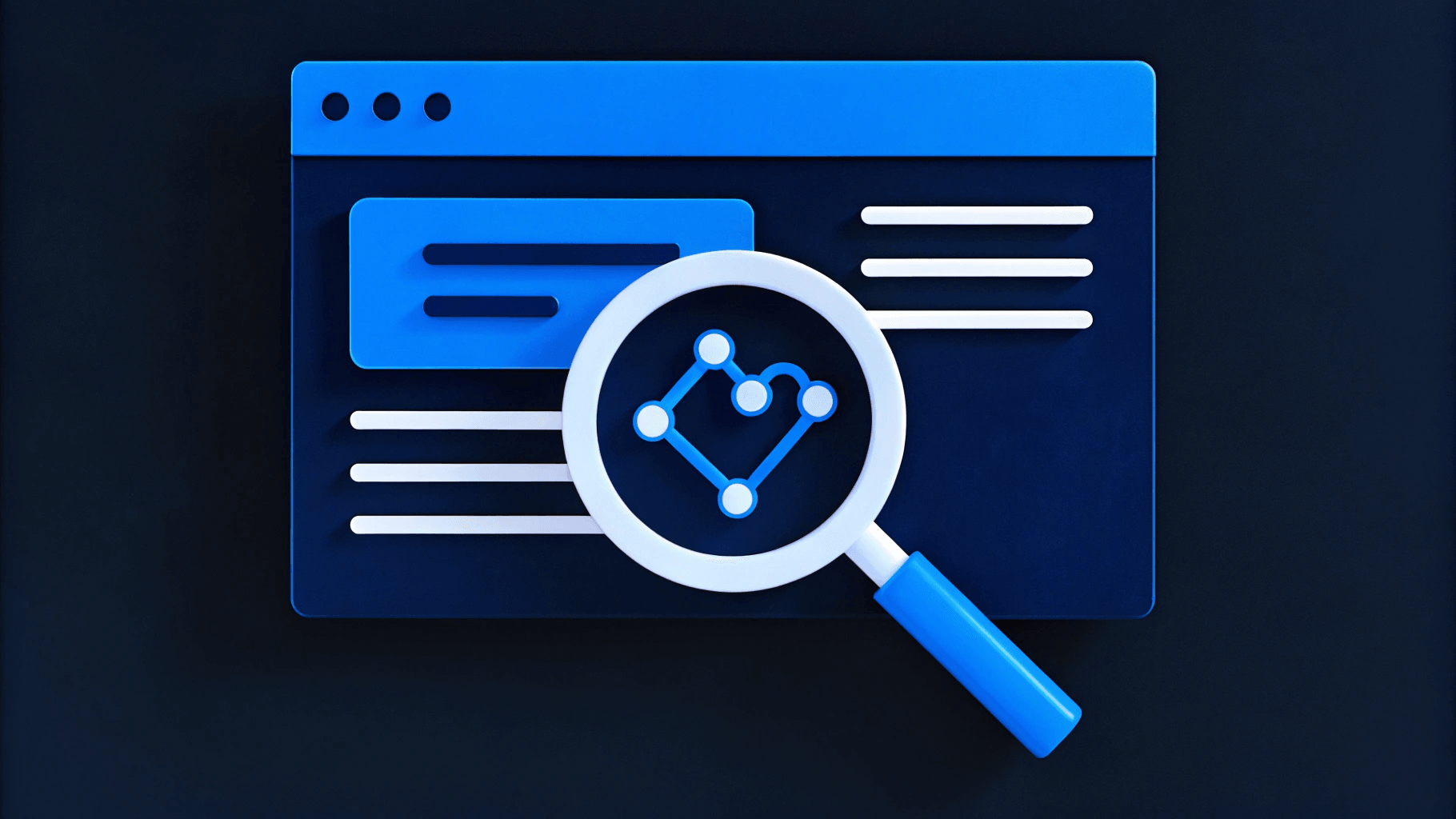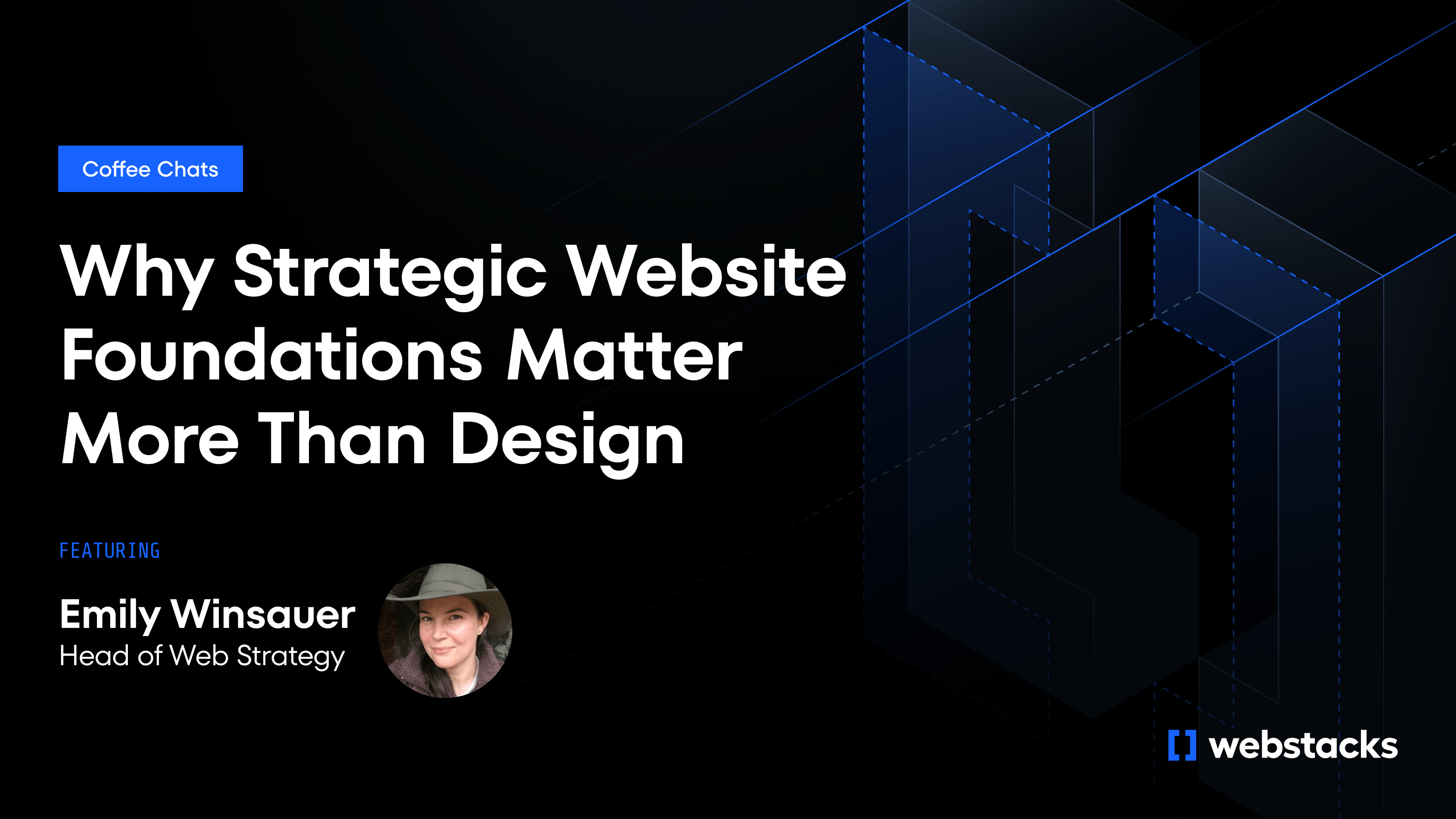Your website is supposed to be your most powerful marketing asset. But if you're like most B2B marketing leaders, it feels more like a bottleneck than an accelerator. Every update requires developer time you don't have. Every campaign demands custom pages that take weeks to build. Every stakeholder request becomes a resource negotiation.
Meanwhile, your competitors are shipping faster, testing bolder ideas, and delivering experiences that make your site look dated. The gap isn't just about budget or team size—it's about approach. While most teams are still debating whether AI belongs in their development workflow, the smartest agencies and in-house teams have moved past that question entirely.
This isn't about automation replacing human expertise. It's about amplification. And the teams that master this new approach first are about to redefine what B2B websites can accomplish.
What Is Vibe Coding?
Vibe coding is an AI-augmented development approach where engineers use AI tools not just for automation, but as collaborative thought partners embedded directly in their daily workflow. For marketing and digital leaders, this means your website development team can finally keep pace with your campaign velocity and strategic ambitions.
Think of it as the difference between having a developer who can only execute specific requests versus having a development partner who can think through problems with you, suggest optimizations you hadn't considered, and deliver solutions faster than you imagined possible.
At its core, vibe coding operates on three principles that directly address the frustrations plaguing modern B2B websites:
- AI as amplifier, not replacement: Your development team remains in control of strategic decisions and brand requirements, while AI handles the technical complexity that usually creates delays
- Speed through safety: Proper guardrails enable rapid experimentation without breaking existing functionality—finally making your website truly agile
- Context awareness: AI understands not just the code, but your business objectives, user journeys, and conversion goals
The Industry Moment
B2B marketing leaders are facing unprecedented pressure to deliver results faster while managing increasingly complex digital ecosystems. Your CEO wants to see marketing impact on revenue. Your sales team needs better lead quality. Your product team wants seamless integration between your website and product experience. And everyone expects it yesterday.
This convergence creates an urgent need for development approaches that can match the speed of business requirements. The old model—where website updates require weeks of planning and development cycles—simply can't support the kind of agile marketing that drives growth in today's market.
Meanwhile, website complexity has exploded. Modern B2B sites need to integrate with CRMs, marketing automation platforms, analytics tools, and product APIs while maintaining performance across devices and channels. The technical overhead of managing these integrations traditionally consumes development resources that could be focused on growth initiatives.
For marketing teams, this creates a particularly frustrating bottleneck. You have campaign ideas that could drive significant results, but implementing them requires development resources you can't access quickly enough. By the time your website changes go live, market opportunities have passed or competitive advantages have eroded.
AI-augmented development addresses this fundamental misalignment between business velocity and technical delivery. For the first time, marketing leaders can have development capabilities that actually match the speed at which opportunities and challenges emerge in B2B markets.
Why is this transformation happening now? Three converging forces are creating unprecedented pressure on B2B digital teams:
- Marketing velocity has accelerated beyond traditional development capacity. Campaign cycles that once lasted months now need to launch in weeks, but website implementation timelines haven't kept pace.
- Integration complexity has exploded. Your website needs to seamlessly connect with your entire marketing and sales stack while maintaining performance and reliability across an ever-expanding set of touchpoints.
- Stakeholder expectations have fundamentally shifted. Everyone from the C-suite to individual contributors expects website updates to happen at the speed of their strategic thinking, not the pace of traditional development cycles.
How AI-Augmented Teams Transform B2B Website Performance
The performance gap between AI-augmented development teams and traditional approaches isn't just about speed—it's about completely different possibilities for what your website can accomplish as a marketing and sales asset.
For marketing leaders struggling to prove website ROI, AI-augmented teams can finally deliver the experimentation velocity needed to optimize conversion paths, test messaging variations, and respond to campaign performance in real-time. Instead of waiting weeks to implement landing page changes, you can iterate on campaign performance while traffic is still warm.
Digital leaders managing complex stakeholder requirements benefit from development teams that can prototype solutions during stakeholder meetings, validate technical feasibility instantly, and incorporate feedback without derailing project timelines. The traditional cycle of requirements gathering, development, review, and revision compresses into collaborative iteration.
Website managers juggling competing priorities from marketing, sales, and leadership finally get development support that can handle multiple concurrent requests without quality degradation. AI amplification means small teams can manage enterprise-level complexity while maintaining the responsiveness that business stakeholders demand.
Teams that master vibe coding don't just ship faster—they fundamentally change what's possible for B2B websites:
- Handle enterprise complexity with startup agility: Small development teams can deliver sophisticated integrations and custom functionality that previously required large technical organizations
- Turn campaign ideas into live experiments rapidly: Marketing teams can test new approaches without waiting for development cycles, enabling true growth experimentation
- Maintain quality under pressure: AI catches integration issues and performance problems that typically emerge under tight deadlines
- Onboard new requirements seamlessly: Whether it's a new marketing tool integration or updated compliance requirements, AI-augmented teams can adapt without major project disruptions
But perhaps most importantly for B2B leaders, these teams start saying yes to website projects that would have been too complex, too risky, or too resource-intensive with traditional approaches.
The Competitive Moat for B2B Companies
Here's what most B2B marketing leaders get wrong about AI in web development: they assume AI tools are commoditized, so any advantage will be temporary. But the real competitive moat isn't access to AI technology—it's organizational fluency with AI-augmented workflows.
For marketing teams, this translates into sustainable competitive advantages in campaign velocity, testing sophistication, and responsive optimization. While competitors are still debating website changes in committee, AI-augmented teams are already testing, measuring, and iterating.
Digital leaders who develop this fluency early will compound their advantages across every website initiative. They'll tackle more ambitious digital transformation projects, deliver better user experiences, and build technical capabilities that can't be easily replicated by competitors still operating with traditional development constraints.
The Cultural Transformation for B2B Teams
The most successful AI-augmented development initiatives in B2B environments don't just adopt new tools—they fundamentally change how marketing, digital, and development teams collaborate on website initiatives.
For marketing leaders, this means moving from a relationship where you submit website requests and wait for delivery to one where you collaborate actively in the development process. When AI can rapidly prototype ideas during strategy meetings, marketing teams become true partners in technical implementation rather than external stakeholders making requests.
Digital leaders benefit from development teams that can engage with business strategy, not just technical specifications. AI-augmented developers can participate meaningfully in discussions about user experience, conversion optimization, and business objectives because they have the tools to rapidly translate strategic insights into functional prototypes.
The transformation touches every aspect of how B2B website projects get planned and executed: how stakeholders communicate requirements, how technical feasibility gets assessed, how quality standards are maintained under aggressive timelines, and how success gets measured across both technical and business metrics.
Successful AI-augmented B2B teams develop:
- Strategic collaboration: Development teams become partners in marketing and business strategy, not just implementers of predetermined requirements.
- Rapid validation: Ideas can be prototyped and tested before major resource commitments, reducing the risk of expensive website initiatives that don't drive results.
- Integrated optimization: Technical performance and business performance get optimized simultaneously rather than being treated as separate concerns.
- Stakeholder responsiveness: Multiple competing priorities from different business units can be managed without sacrificing quality or creating development bottlenecks.
The Future Is Already Here for B2B Websites
While much of the B2B marketing world still operates with traditional website development constraints, forward-thinking companies are already demonstrating what becomes possible when development capabilities match business velocity.
These early adopters aren't just shipping website updates faster—they're fundamentally changing how they approach digital marketing strategy. When you can prototype complex campaign ideas in hours rather than weeks, when you can respond to competitive moves with new landing experiences in real-time, when you can test sophisticated personalization without major technical overhead, the entire strategic conversation changes.
For marketing leaders, this represents an opportunity to finally align website capabilities with campaign ambitions. For digital leaders, it means being able to say yes to transformational projects that would have been too risky or resource-intensive with traditional development approaches.
The gap between early adopters and traditional approaches is widening with every campaign cycle, every product launch, and every competitive response. B2B companies that master AI-augmented development now will set the standards for digital marketing sophistication that others will struggle to match.
The most sophisticated B2B development teams are already reshaping what websites can accomplish:
- Building dynamic campaign landing pages that adapt to traffic sources and user behavior in real-time
- Creating seamless integrations between marketing automation platforms and website experiences that update instantly based on lead scoring and engagement data
- Implementing sophisticated personalization that responds to account-based marketing signals and prospect behavior patterns
- Delivering complex product demo experiences that integrate live data and user-specific configurations
But more importantly, they're enabling marketing strategies that were previously impossible due to technical constraints.
Lessons from the Trenches: How Webstacks is Transforming B2B Website Development
At Webstacks, we've been implementing vibe coding across our B2B SaaS client projects for over a year. What started as an experiment in accelerating our composable website development has evolved into a fundamental part of how we approach complex marketing and digital transformation challenges.
The results have been transformative for our clients: marketing teams that can finally test campaign ideas at the speed of their strategic thinking, digital leaders who can tackle enterprise-level projects without enterprise-level development resources, and website managers who can respond to stakeholder requests without constant resource negotiations.
We're delivering sophisticated headless CMS implementations that support complex marketing automation workflows in weeks rather than months. Our clients' marketing teams can launch new campaign experiences, test messaging variations, and optimize conversion paths without waiting for traditional development cycles.
But the most significant change isn't just speed—it's strategic possibility. When marketing leaders can prototype complex integration ideas during planning meetings, when digital teams can validate technical approaches before major commitments, when website managers can say yes to projects that would have been impossible before, the entire conversation about what websites can accomplish for B2B growth changes fundamentally.
The Choice Ahead for B2B Leaders
Every B2B marketing and digital leader faces the same strategic decision: evolve your website development capabilities or watch competitors pull ahead with superior digital execution. The companies that treat AI-augmented development as a nice-to-have productivity boost will find themselves competing against teams that treat it as core growth infrastructure.
This isn't about technology adoption—it's about competitive positioning in an environment where website performance directly impacts revenue generation, lead quality, and market positioning.
The question isn't whether your team should explore AI-augmented development. The question is whether you want to define the future standards for B2B digital marketing or be forced to catch up to the standards others set.
The marketing and digital leaders who master AI-augmented website development first won't just win more campaigns—they'll reshape client and prospect expectations about what B2B digital experiences should deliver. And once those expectations shift, there's no competitive path backward.
If you're ready to transform what's possible for your B2B website—whether that's finally achieving the campaign velocity your marketing strategy demands, delivering the integration sophistication your digital transformation requires, or building the experimentation capabilities your growth objectives need—we should talk. At Webstacks, we're not just using AI to build websites faster. We're using it to build websites that finally match the ambitions of the marketing and digital leaders who depend on them.




